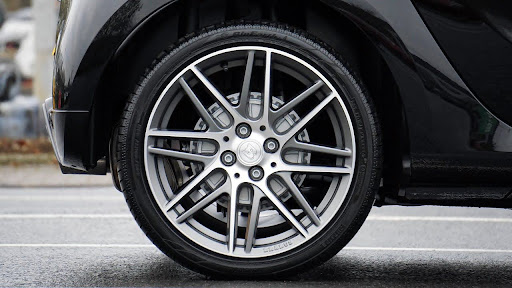
McKinsey report – reducing greenhouse gas emissions in the global auto industry
Roads toward a low-carbon future: Reducing CO2 emissions from passenger vehicles in the global road transportation system
Despite the growing number of cars on the road worldwide, the automotive industry has a significant opportunity to reduce greenhouse gas emissions from the use of passenger vehicles, much of it using proven technologies.
Without action, carbon emissions from the use of passenger vehicles are projected to increase by 54 percent (1.8 gigatons) between 2006 and 2030, fuelled by a growing number of cars on the road (from 730 million to 1.3 billion).
We estimate that an integrated approach to carbon abatement in the automotive sector could reduce passenger vehicle emissions in 2030 by 47 percent (2.2 gigatons) relative to a ‘do nothing’ scenario. Such an integrated approach would include investing in more fuel-efficient vehicles, broadening use of biofuels, improving road and traffic infrastructure, and stimulating greater use of public transport and eco-friendly driving habits.
Increasing the fuel efficiency of new vehicles accounts for 72 per cent of the potential for emissions reduction in 2030 identified by our research.
To achieve this, vehicle manufacturers and suppliers will need to focus on improving powertrain (engine and transmission) efficiency, aerodynamics, and rolling resistance (weight reduction).
Increasing the proportion of bioethanol blended with gasoline accounts for 17 per cent of the abatement potential in 2030. The economic attractiveness of biofuels will be driven by some combination of increased production efficiency, feedstock costs, subsidies, a tax on carbon, and the long-term price of oil.
Improving driving behavior, traffic flow, and reducing distances driven could contribute 11 per cent of abatement potential in 2030. Due to the relatively short time needed for implementation, these measures could provide over 21 per cent of the abatement potential in 2020.
By 2030, carbon emissions from passenger vehicles worldwide could thus drop to 18 per cent (0.55 gigatons) below 2006 levels. Many of these abatement measures on average yield savings through the life of the investment – the life of the vehicle in the case of fuel efficiency improvements. However, the upfront costs of the transition would be significant.
If the industry pursues a range of propulsion technologies (i.e., internal combustion, hybrid gasoline-electric, and fully electric) to achieve such levels of abatement, the annual incremental investment for enhanced vehicle content to improve fuel efficiency – across all regions and all propulsion systems – would exceed $230bn in 2030. This amount would represent roughly 14 per cent of total expected industry spend on passenger vehicles that year. The additional industry spend in 2030 on fuel efficiency measures ($230bn) would be on top of annual cost reductions averaging 3.0 to 3.5 per cent through 2030 by the industry on this vehicle content. To put these figures in perspective, automakers and suppliers have historically reduced the overall cost of vehicles by about 2.5 per cent annually, though such cost reductions have typically been offset by content enhancements for safety, comfort, power, or other attributes.1 Electric vehicles (EVs) will likely contribute significantly to greenhouse gas abatement in the longer term; however, such reductions will be realized only as carbon emissions from electricity generation are fundamentally reduced. With plans in place across the globe to clean up the grid, EVs present a promising option if high battery costs and infrastructure frailties are addressed concurrently.
The need for radical, environmentally inspired innovation around fuel efficiency – and purposeful collaboration among automakers and their suppliers, energy providers, consumers, and policymakers that drives an integrated approach to reducing carbon emissions – represents a huge opportunity to reinvigorate the worldwide automotive industry.
1 See “HAWK 2015: Knowledge-based changes in the automotive value chain,” McKinsey & Company, August 2003. This study found that the automotive industry typically reduces per-vehicle costs by B$4,050 every 13 years. Automakers typically add approximately B$5,400 of content to vehicles over the same period, leading to gradual increases in the cost of vehicles to consumers.
About the report
“Roads toward a low-carbon future: Reducing CO2 emissions from passenger vehicles in the global road transportation system” is based on an 18-month research project into potential measures to reduce greenhouse gas emissions from the use of passenger vehicles. This report focuses on one of three scenarios that were examined, all of which lead toward a low-carbon future for the passenger vehicle sector. In this so-called “mixed-technology scenario”, various technological solutions reach the market, including optimized internal combustion engines (ICEs), gasoline-electric hybrids and fully electric vehicles. In this scenario, worldwide new car sales in 2030 would consist of 3 per cent electric vehicles (EVs) (~3 million per year), 16 per cent plug-in hybrid-electric vehicles (PHEVs) (~14 million per year), and 23 per cent hybrid vehicles (~21 million per year). Average “well-to-wheel” emissions from new vehicles in this scenario would fall from 270 grams of CO2 per kilometer travelled in 2006 to 150 grams of CO2 per kilometer travelled in 2030.
In the mixed-technology scenario we have calculated the incremental per-ton cost of abatement for each measure that has the potential to reduce greenhouse gas emissions. By arranging the measures, with their abatement potentials, from lowest to highest cost per ton, we have created a global greenhouse gas abatement curve for passenger vehicles. In all, we analyzed more than 25 discrete CO2 reduction measures across five regions, and summarized them into 16 primary measures on our global curve.
For more information, please contact Yolande Daeninck on +1 212 415 1971.












More Stories
Automotive Industries (AI) Newsletter April 2025
Bangkok International Motor Show 2025 – The Talk of Sensuous Automotive
Earn GHG reduction values through MOL Pure Car Carrier “Book and Claim (B&C)” service